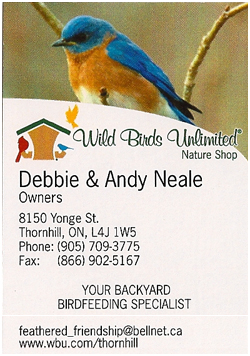Naturalists seek more protection for Dunlap Park and Observatory
MEDIA RELEASE
Naturalists seek more protection for the
Heritage Designation of Dunlap Park & Observatory
November 22, 2007 — The Richmond Hill Naturalists today filed a Notice of Objection to the proposed Heritage Designation for the David Dunlap Observatory. On October 23, the Town of Richmond Hill designated the Observatory buildings worthy of protection under the Ontario Heritage Act. The Naturalists made the formal objection because the Town of Richmond Hill did not include heritage protection for the contents of the Observatory or the land on which it stands.
“We stepped forward even though we were put in a very difficult position,” said Marianne Yake, President of Richmond Hill Naturalists. “On one hand we applaud the actions the Town took in trying to preserve the buildings, but believe Council should use the full extent of its authority in seeking to protect this historical, cultural and scientific asset for our community”, she stated.
The Notice of Objection states further protection is required for the scientific, historic and educational contents of the Observatory buildings, including telescopes, computerized support equipment, maintenance and repair shops, books, periodicals, observation logs and slide reference libraries. In addition, the Richmond Hill Naturalists call for protection of the heritage landscape of the site. Yake stated that “In addition to the clear environmental benefits of forest cover and green space, full protection of the David Dunlap Observatory landscape is needed.”
“The unique historic and cultural value of the David Dunlap Observatory can only be maintained if the natural landscape remains unaltered and if the resident wildlife refuge, an intended consequence of the Observatory’s long history, is also protected”, she added.
“Every clear night, the David Dunlap Observatory has made continuous contributions to astronomy since 1935 and that work continues to this day. The natural setting surrounding the Observatory has flourished with formal tree plantings that support the steady operation of the telescope. The buildings and the land are integral. You can’t protect one, without the other. They’re locked together by the intent of the original donor, Jessie Donalda Dunlap.”
This Fall, the University announced its intention to sell the Dunlap property and buildings, and by mid-November it put the property out for formal bids.
“Almost every school age child living in the GTA over the years has been through these buildings getting an introduction to astronomy and real science,” said Yake. “If that’s not heritage, I don’t know what is.”
The Conservation Review Board who administers the Ontario Heritage Act is expected to hear the matter of designation for the David Dunlap Observatory.
END
Contact Info:
Marianne Yake
President, Richmond Hill Naturalists
Phone: (905) 883-3047
Email: [email protected]
https://www.rhnaturalists.ca
